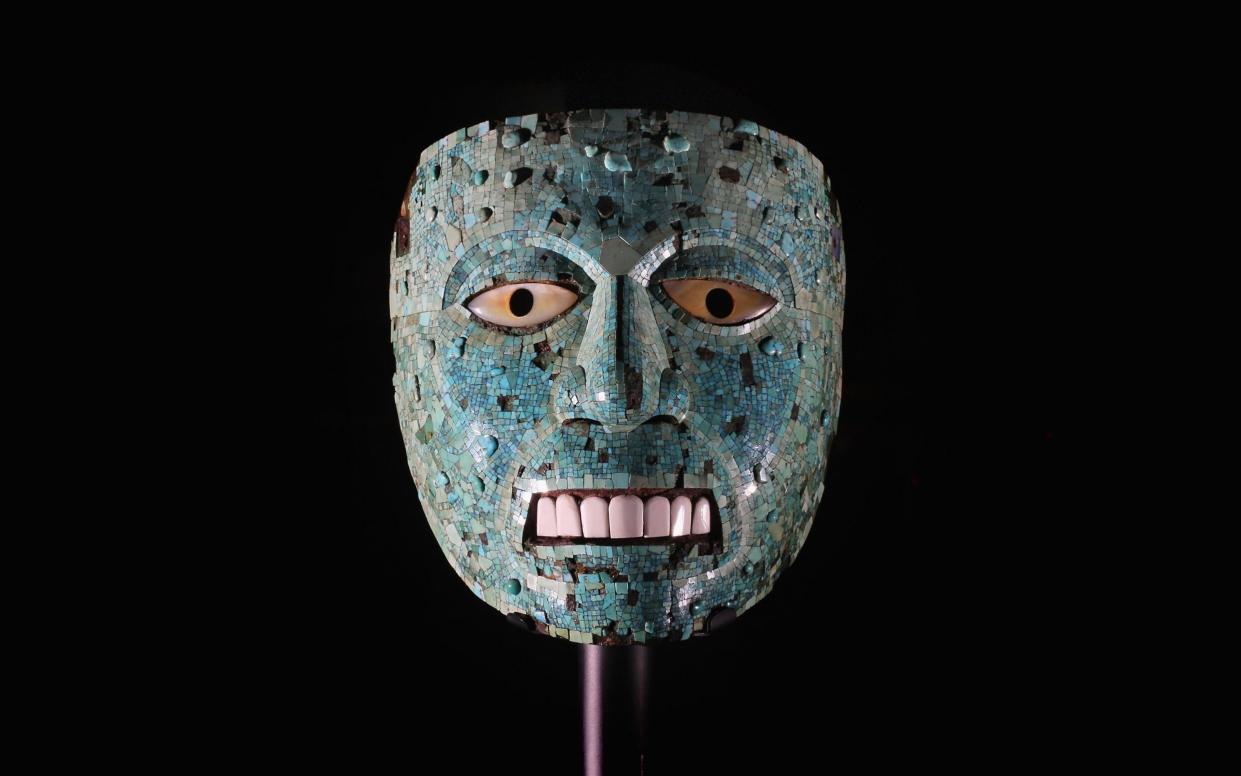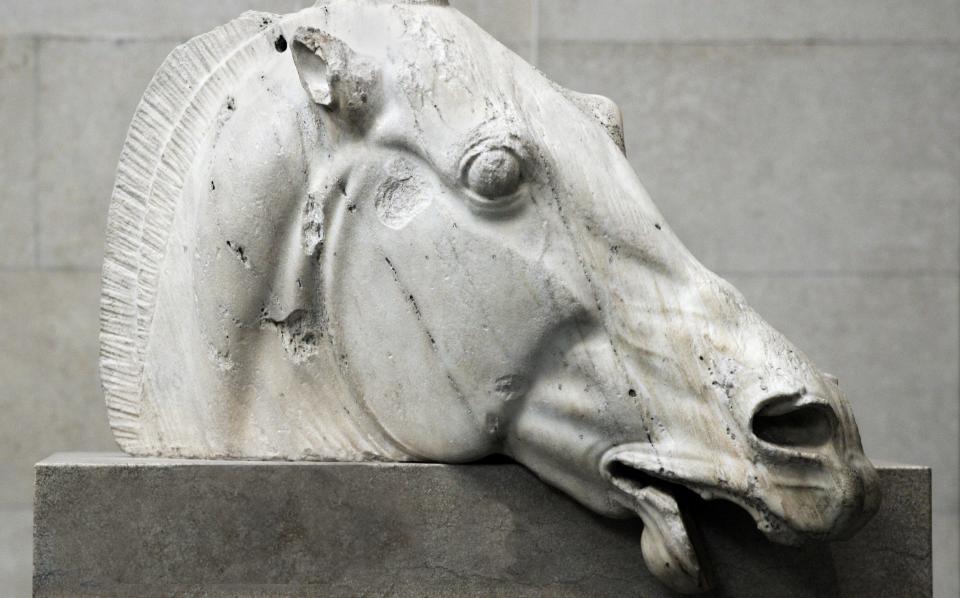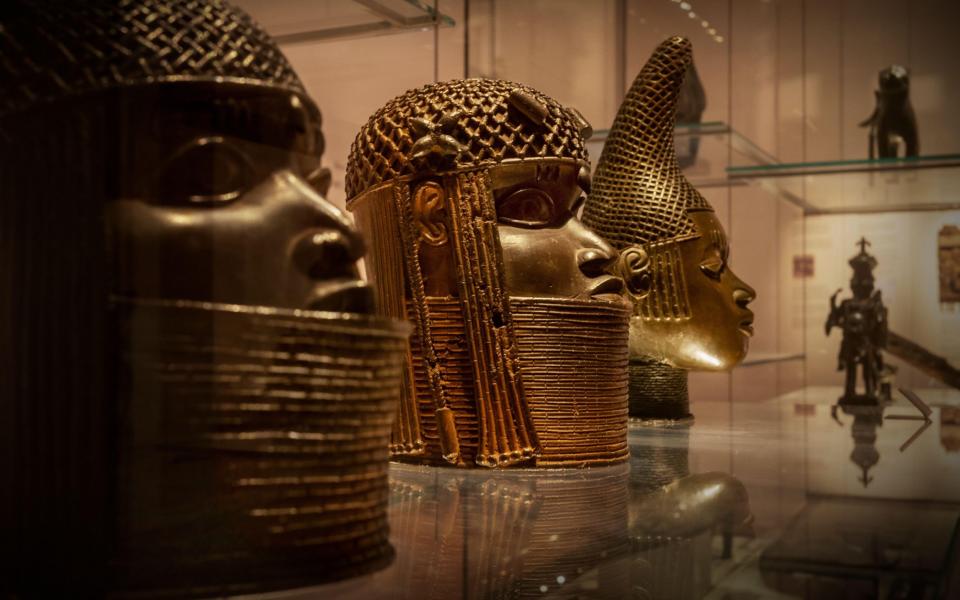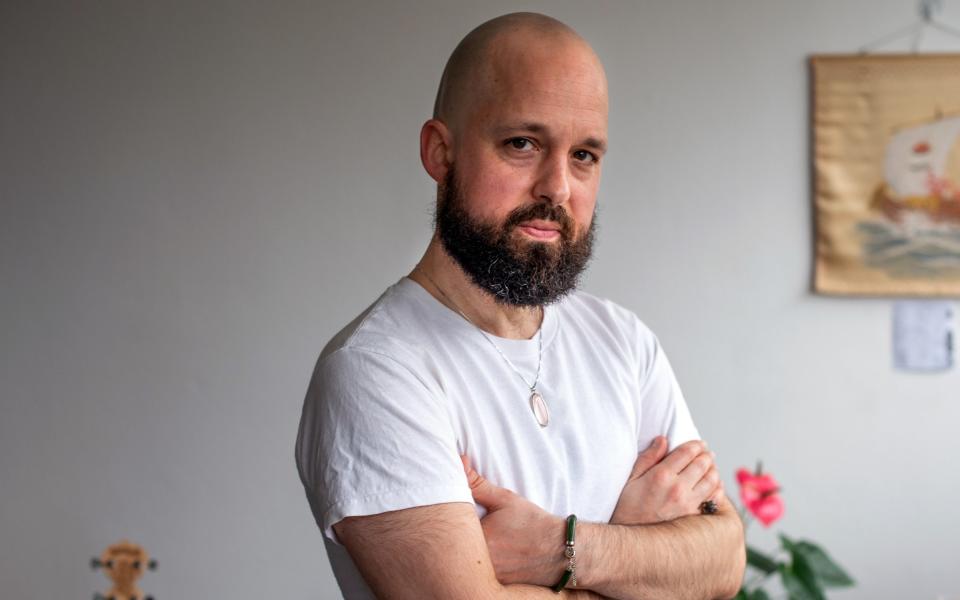Strange lights, tropical heatwaves and a smiling dwarf: Is the British Museum haunted by ghosts?

In 2015, writes Noah Angell in his new book, Ghosts of the British Museum, “a Dutch couple approached the information desk in the Great Court”. They had been taking photographs in the clocks and watches gallery. But one of the images had disturbed them. It was of the Mechanical Galleon, an extravagant 16th-century automaton, with clockwork figures that parade on deck before the seated likeness of the Holy Roman Emperor.
It is a marvel, but it wasn’t what was concerning the tourists. In the photograph, reflected in the glass of the galleon’s display case, the museum assistant recalled, was a woman, or perhaps a girl or, indeed, a dwarf. “She smiled mischievously… Clumps of her hair were missing, as if they’d fallen out. She had strange clothes on.” The couple insisted they had been entirely alone. Angell recorded the assistant’s words: “And so they asked me, ‘What do you think?’”
The request for an explanation for something inexplicable, Angell notes, was not an isolated occurrence. “It’s an open secret among museum workers,” he writes, that certain types of museums are “prone to hauntings”.
Ghosts of the British Museum documents the many cases that Angell, a 43-year-old American artist, has collected over seven years interviewing employees of the Bloomsbury institution. From a searing heat that descended upon the Mexico gallery, and 200-year-old oak doors opening by themselves, to guards flung to the ground by a mysterious force, there have been unexplained incidents throughout the museum. The Sutton Hoo gallery is something of a hotspot. It contains the magnificent hoard of treasures from the Anglo-Saxon ship burial that was unearthed from a field in Suffolk in 1939. Angell heard that the landowner, Edith Pretty, had been drawn to investigate the earth mounds on her property because she had seen flaming torchlight around them at night – a story that he later confirmed with a researcher who had worked on the Sutton Hoo find.
One day, Angell invited Patsy, a psychic medium, to tour the museum with him. In an area of intense paranormal activity, Patsy began talking in a low voice about exhibits that “shouldn’t have been moved”: medieval Christian relics that had been removed to make way for a new Islamic gallery. She described angry forces from a time when Christendom engaged in bloody crusades to recapture Jerusalem. “You’ve replaced Christianity,” she said, “you have replaced it with something that’s a devil to us.”

Many have no faith in psychics and will dismiss these stories as, at best, fanciful. But Angell soon realised that most of the accounts had more than one witness. “It’s fairly rare that people are all alone in the British Museum. They usually share an office with someone; they patrol in pairs,” he tells me, in measured tones, from his home in Berlin. The night security staff especially were a storehouse of museum lore. Some get into the habit of talking to human corpses as they pass by, such as the mummified bodies from ancient Egypt and the Iron Age remains of Lindow Man that were found in a bog in Cheshire in 1984. “They ask him and the mummies if they’re all right – ‘All quiet in here tonight?’ – and say goodnight.”
Some employees are convinced that the hauntings are related to people who died in the museum or who worked there for a long time and have passed away. Yet many, Angell discovered, believe that the objects themselves retain some kind of imprint from their past.
The British Museum, Angell suggests, is different from most places that we associate with hauntings. “We talk about haunted pubs or haunted houses. But inside the British Museum, you have the kingdom of Benin, you have significant portions of the Parthenon, of the Karnak temple.” These exhibits, Angell believes, blur the line between an artefact and where it was taken from. In the book, he writes about how he sees the museum as a black hole, a void that “captures other times within it”.
“You can’t convince me that these things inside the British Museum are tamed,” Angell says. “By putting them in a glass case or numbering the rooms that they’re in, you don’t zap the power of a monument that is 5,000 years old and had a kind of continuous ritual function. I don’t believe that all that just evaporates.”

It makes the haunting of the museum a different proposition from ghostly phenomena in a house “where someone once died”, he insists. “A lot of the objects in the museum, they’ve seen war, you know, they were removed in the midst of conflict, and that is one of the memories that’s stored within.”
People often ask Angell if he believes in ghosts himself. “My impulse is to reject the premise of that question,” he tells me, “because it’s not a matter of belief. If you have experience of ghosts, then you have to improvise a sort of framework in your belief system” to explain those experiences to yourself. “I have had experience of ghosts and spirits,” he adds.
In the book, he describes how in 2016, while riding a bike on Oak Island in North Carolina, where he grew up, he had a vision of “someone running out of the woods, swinging an axe with both hands, with all of their body weight arced behind it, looking to split my head open”.
It came with a jolt of realisation that he had experienced the same vision before in the same location, and he began researching the area. He learnt that the family who used to own most of the island had used enslaved labourers to make turpentine from the pine woods there, and resin was collected by hacking a “V” into the tree with an axe. “Perhaps I had experienced energetic flashes of an axeman from the distant past? I don’t know,” he writes. “It made me feel something really bad,” he says today. “I felt, somebody’s there, and they’re not doing very well, and I’m now in contact with them. Which is not really any different than if you speak to someone on the street, and you realise, ‘They’re really unwell. I should be careful how I proceed.’”

He talks about interviewing Irving Finkel, author of The First Ghosts and a senior assistant keeper at the British Museum. Finkel discovered what are thought to be the first known ghost stories on Babylonian tablets that date back 4,000 years: “He believes that Homo sapiens as a species believe in ghosts, and that the more they protest, the more it reinforces that fact,” Angell says. “They’re just fighting something which they know is there.”
When I spoke to Finkel, he suggested that seven out of 10 people in a social setting would admit to having “had an experience, either they saw a ghost, or somebody they know and trust saw a ghost… I’ve met a lot of people who’ve told me about ghosts that they’ve seen. And I can’t see any reason at all to believe that they’re deluded or lying.” Ghosts of the British Museum, he suggests, might have had even more stories – “I think quite a lot of people here had narratives that they didn’t want to tell. If there is a building in Britain where you would expect ghosts to be, I would think that this museum would feature high up on the list, because of all the artefacts to do with the dead, over thousands of years.”
Finkel maintains that monotheistic religions and science have led people to dismiss a phenomenon that ancient peoples saw simply “as part of life”. But Angell notes that most people today are still willing to accept ghosts in fiction. “I think that people have ways of accommodating these things, even if it doesn’t suit their self-image to say so. What you believe is neither here nor there,” he adds, “it doesn’t protect you to not believe in things… A lot of people don’t believe in ghosts and then they live in a house which is haunted and they have to figure out how to make peace, and these are practical skills, you know. Someone that you love passes, and it’s come to your attention that they’re unable to find peace, then you have an interest in trying to help them. There are many ways in which it’s not a strictly theoretical or fluffy kind of thing. It can be like a leak in the roof, there’s water coming in, and you need to figure out how to stop it.”
At the museum, Angell tried to seek out those who had long experience of working there. “For the most part, you’re talking about people who were there for 30 years and had one outstanding experience. And they had either already left the museum or they were so senior that they couldn’t imagine that they would be punished for retelling a story.” Some, who still work there, wished to remain anonymous, such as the guard who described seeing balls of “pure white” light burst onto a CCTV screen.

Angell did not seek permission from the museum to write the book. “I avoided [that],” he says, “because there was a time when the museum presented me with a contract, and it was pretty transparent [that] if I had signed it, it would have allowed them to shut everything down.” He was able to sidestep official channels by collecting tales “on a peer-to-peer basis. People would tell me a story and I’d say, ‘Well, who was there? Do they still work here? Are you in touch with them?’”
It’s also possible that the museum may have been concerned that Angell’s book could be used to smuggle in a decolonialising agenda. His advice to prospective visitors, after all, is: “Don’t go. I think we should divest from these kinds of places, not the British Museum only, but the colonial museum in general. I think it’s anachronistic.”
As for those who do still want to visit, Angell warns them to step lightly – some artefacts, he notes, in the culture they come from, are “not meant to be seen by anyone, aside from certain people who are initiated… A lot of the things I have seen in the British Museum, I don’t think they are really meant for my eyes.
“I do pray before I go in there,” he admits, “because you are there with a lot of powerful stuff that you don’t understand very well… I felt I had to be respectful. I continuously asked for safe passage. I wouldn’t go into the British Museum without taking appropriate precautions.”
Ghosts of the British Museum by Noah Angell (Monoray, £20) is out on Thursday

